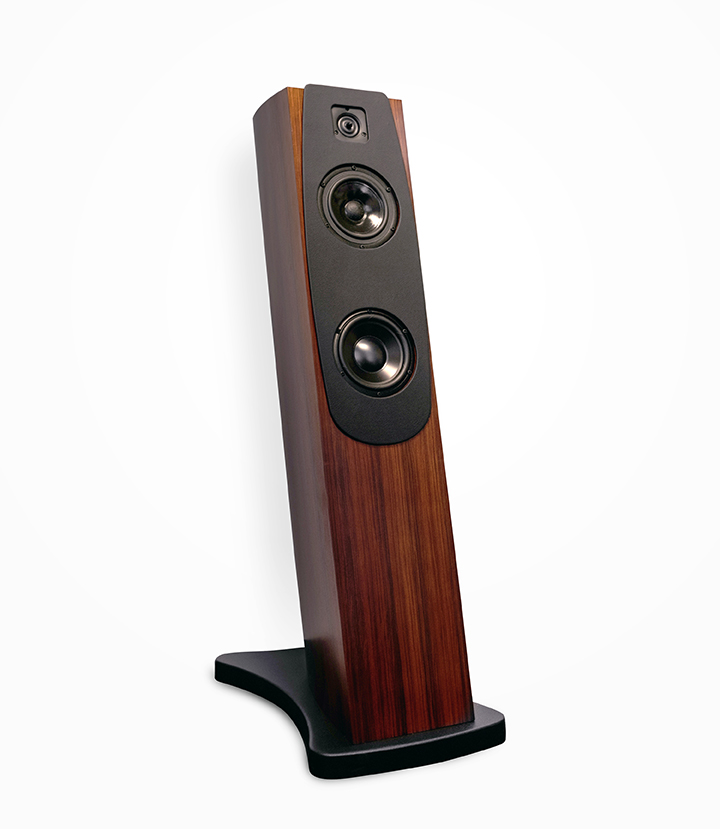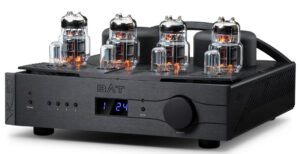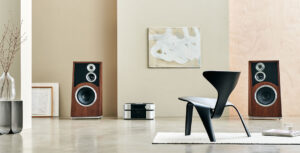
What is ‘real’? Does that question take you back to philosophy lessons, watching The Matrix, or perhaps a college dorm room far past midnight? Please let me clarify, then; in a hi-fi context, what constitutes ‘realistic’ sound from a loudspeaker? Some among us would answer this important question by pointing to binders of testing reports replete with pristine measurements, but I think the majority of audiophiles would argue that a truly ‘real’ sounding loudspeaker is best measured informally in your very own living room. Can your choice in loudspeaker actually can take you away to feel the humidity in that New Orleans jazz club, to an electrically-charged evening in London’s O2 arena, or right into the cramped quarters of Memphis’ Sun Studios circa 1954 with the King recording in his prime? If you second this informal but highly effective test of ‘real’ sound it would behove you to take a long hard look at USA-based speaker manufacturer Sonner Audio’s new floorstanding loudspeaker, the Legato Duo. While Sonner is a relative newcomer on the scene, its primary design goal is a laudable and mature one: namely, to provide music lovers with a tantalisingly natural sound experience that allows the listener a true connection to the artist. Yes, the Legato Duo’s quality materials and impressive measurements are present and accounted for, but in order to differentiate itself in a crowded market, Sonner wishes to hang its hat on playback ideals that you would expect to hear at a ‘real’ live event: killer imaging, startling transparency, and accurate soundstaging.
Lets take a minute right off the bat to address an elephant in the room. Spending thousands on a new pair of speakers made by a company you might not know very well can be a nerve-wracking outlay of capital. A buyer comfortable shopping at this price point needs to be confident that they are checking several boxes in their speaker purchase: long term reliability, aesthetic wow-factor, and of course outstanding performance to name just a few. The challenge to overcome the consumer’s information gap and gift wrap a warm and fuzzy feeling is whole heartedly embraced by the good, friendly folks at Sonner Audio. Sonner believes the more you learn about its team-driven company culture, the more likely you will be to embrace their forward-thinking approach.

Sonner Audio was conceived in the Boston, Massachusetts area slowly over a period of nearly twenty five years and the company officially was launched in 2016. Sonner’s founders spent their own time during those warm-up years experimenting with speaker construction while paying the bills working corporate jobs in the industrial and electrical engineering fields. It was this relevant experience and insight that allowed Sonner’s founders to carefully prepare the cost-no-object Allegro Unum bookshelf speaker, which was the company’s first big splash after launching in 2016. Over time, Sonner methodically built its reputation for sound quality through favourable listener reactions to the original Allegro Unums, which were demonstrated at a series of high profile North American audio shows. Following up the high praise and market acceptance for the Allegro Unum bookshelf, Sonner set to work on the new Legato line of floorstanding loudspeakers. From the start the Legato series and top dog Legato Duo specifically was intended to borrow much of the successful technology found in the £12,000 Allegro Unum, but to enhance its musicality in the majestic and bold way that Sonner felt only floorstanding speakers can provide.
The designers of the 2.5-way Legato Duo endeavoured from the speakers conception to accommodate two major design principles in order to create their desired vibrant soundstaging: focus on time alignment, and designing to create a flat impedance in the Legato Duo. For any unfamiliar with the time alignment concept the Legato Duo’s noticeably front-to-back tilted 38cm wide x 109cm high x 66cm deep one-piece cabinet shape physically places the drivers in a natural alignment to allow the sound wave to meet at the listeners’ ears, in phase and on time. The Legato Duo comes with a magnetic front facing leather faceplate that surrounds the 25mm ring radiator tweeter, the 140mm coated paper cone mid woofer, and the 152mm aluminium bass woofer. The faceplate is quite original in the sense that it can be customized with text or images to the taste of the owner, but make no mistake this leather faceplate is not merely a handsome aesthetic feature of the Legato Duo. Instead, the leather-clad faceplate plays an integral role in helping the speaker achieve its time-alignment goals and is an indispensable piece of the sonic framework. Sonner designed the Legato Duo on the premise that successful time-alignment would allow the speaker to disappear into the room to produce a wider, more resolved soundstage and to produce sharper, more finely focused stereo images.
Complementing the focus on time alignment the Legato Duo also boast a flat impedance curve – meaning it offers the same load resistance at all frequencies. To achieve this notable feat, Sonner uses hand-selected parts to build the Legato Duo’s proprietary crossover network in-house. Sonner describes the crossover as a “symmetrical panoramic design”, but treats the exact circuit topology and the values of the capacitors, resistors, and inductors used as closely guarded secrets. Crossover frequencies are set at 200Hz and 2.5kHz. Sonner uses costly and labour intensive point-to-point wiring in its crossover, a highlight you won’t find in most of the Legato Duo’s competition.. Sonner suggests that a flat impedance curve helps improve the overall sensitivity of the Legato Duo, which measures at a quite manageable 90db. This level of sensitivity allows most valve and solid-state amplifiers to drive the LD speakers with grace and precision. Kudos to Sonner for exercising forward thinking in knowing that £8,900 is a max buy for some of us as household budgets don’t always allow some of us to upgrade amplification and speakers simultaneously. Sonner feels it has captured lighting in a bottle with the Legato Duo and is very protective about showing all its cards on the technical end. A pardonable mark of pride is that the company president is concerned that his product is so good that, if Sonner were to reveal its technical hand, the firm might soon face knock-off versions making their way out of China.
To my ears one of the best differentiators between live ‘real’ music and even a top notch recording is the dynamic envelope. You just can’t fake dynamics, and when loudspeaker playback seems to be dragged to produce a dramatic dynamic swing it is difficult to keep a crafty brain buying the illusion that one is witnessing a performance in the natural, effortless way that unfolds in a live setting. Time and time again in my weeks with the Legato Duos they were able to command and push the essence of the music forward with their head turning dynamic agility. Gary Bartz’ 1977 Jazz-Funk classic Music is My Sanctuary [Columbia] provides an excellent example of the Legato Duo’s show stopping dynamic prowess with the alto sax break in the track ‘OO Baby Baby’ about 45 seconds in. In this passage Bartz’ ace band drops the tempo for a split second setting up Gary to come crashing in with his liquid smooth alto saxophone. The Legato Duos simply sparkled here in their ability to go from zero to 60 in nothing flat.
The Legato Duo’s also allowed Bartz’ sax riff to stretch, lengthen, and even hover completely suspended before careening back into the groove at the perfect pace, leaving me wondering why I don’t play this album every day for the rest of my life. Living with the LDs was full of sublime time-stopping moments like ‘OO Baby Baby’ and I felt that they lived up to and exceeded their price tag for those who prioritise warmth and musicality. The LDs exhibit a special, even uncanny ability to open up space and transparency in their presentation and make instruments sound like you would expect to hear them walking into a concert venue mid stream in an impassioned performance. The biggest drawback I found to the Legato Duos (if there actually was one) was the large speakers virtually scream to be placed in a sizable room to realise their full potential. The LDs bass control is a shot of pure power and can overwhelm small and potentially mid-sized rooms. If you have some space to work with, amps you already love, and have been waiting for the right speaker to open up ‘real’ coherent sound in your living room look no further than Sonner Audio’s handsome Legato Duo.
TECHNICAL SPECIFICATIONS
- Type: 2.5 way bass ported enclosure
- Floorstanding Loudspeaker
- Drivers: 25mm ring radiator tweeter;
- 140mm coated paper cone mid woofer; 152mm aluminium bass Frequency response: 37Hz–23kHz Nominal Impedance: 4 ohms Minimum impedance: 3.8 ohms Sensitivity: 90dB
- Dimensions (W×H×D): 38 × 109 × 66cm Weight: 29.5kg each
- Finishes: Cherry, Red Rosewood, Satin
- Black (coming soon!)
- Price: £8,900 per pair
Manufactured by: Sonner Audio
URL: sonneraudio.com
Distributed by: Select Audio
URL: selectaudio.co.uk
Tel: (0)1900 601954
Tags: FEATURED
By Buzz Hughes
More articles from this authorRead Next From Review
See all
REL Classic 98
- May 07, 2024

Balanced Audio Technology VK80i
- May 07, 2024

Audiovector Trapeze Reimagined
- May 07, 2024











